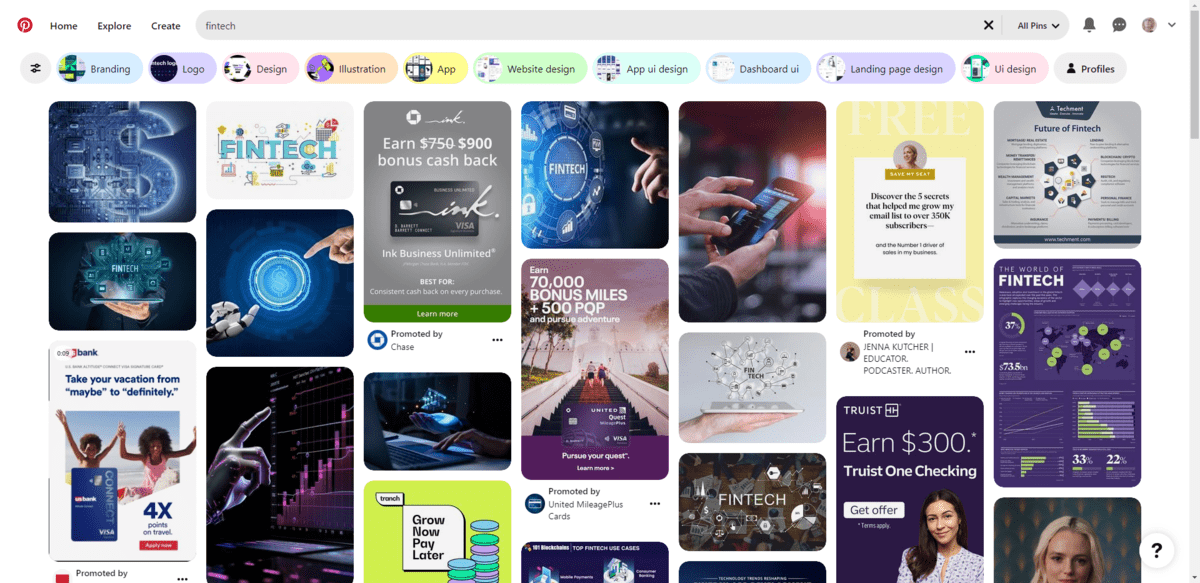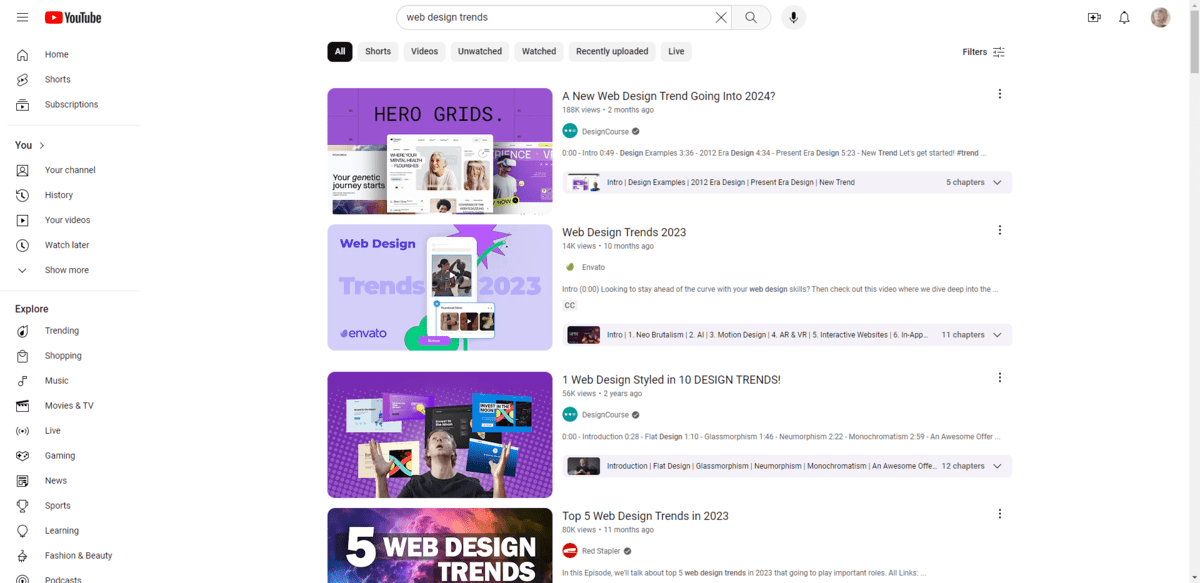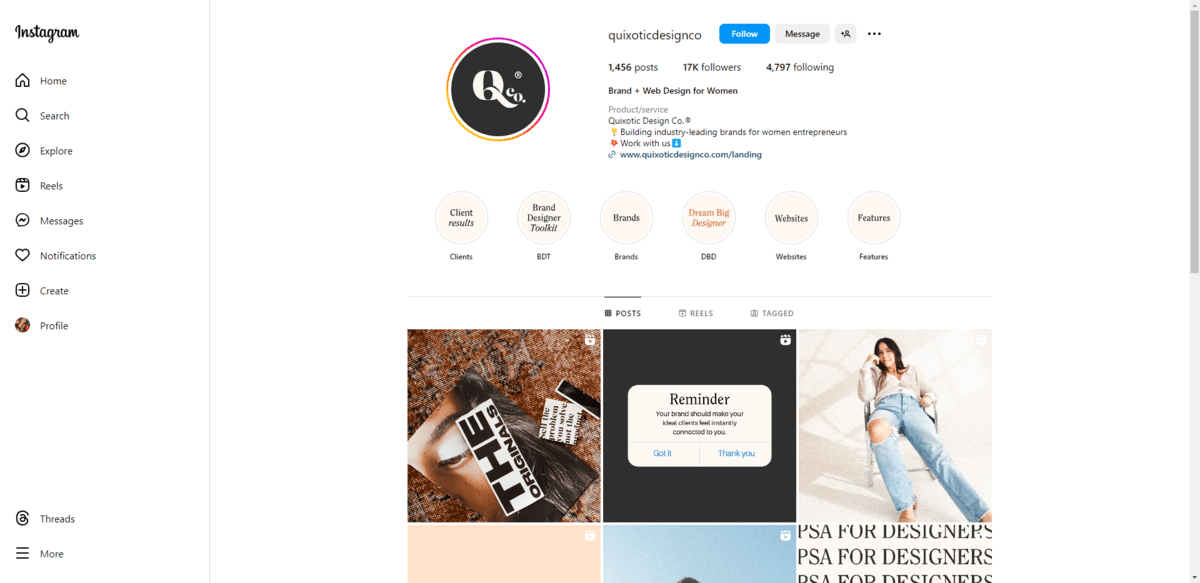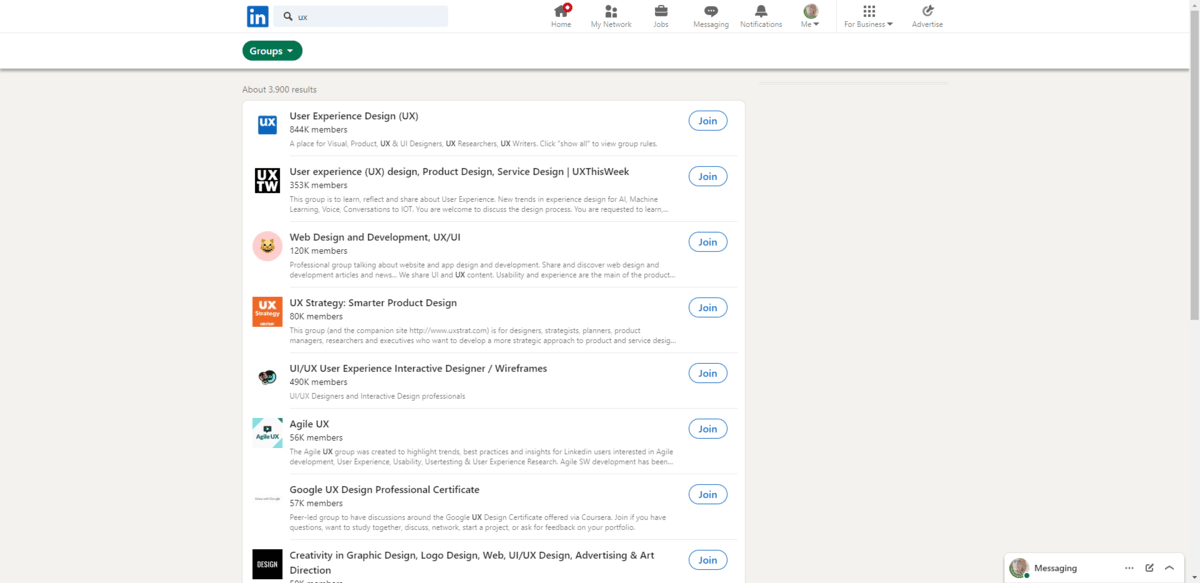S
Suzanne Scacca
Guest
Your website is a crucial asset for establishing yourself as a web designer online. However, that alone won’t help you get a huge influx of clients, make professional connections or generate good revenue from your affiliate partnerships. That’s where social media comes into play.
The average adult spends a couple of hours on social media every day. If you already find yourself dropping in on Instagram, YouTube or TikTok each day, why not spend some of that time using social media to grow your business?
In this post, we’ll look at nine creative ways to use social media as a web designer. Whether you’re a freelancer, employed or running an agency of your own, there’s a lot you can do with social media to get ahead professionally.
Social media was once just a place to be social. Now you can use it for all kinds of things. Here are some ways to put it to use for your work as a web designer:
When I say secondary portfolio, I don’t really mean using social media as a backup to the one on your website. While you can certainly show off the same samples on both platforms, I think that social media would be a better place to showcase other work.
Your website portfolio should be lightweight and easy to scroll through, containing your latest and greatest work. Your social media portfolio, on the other hand, is a great place to show off works-in-progress, personal projects, older samples, samples from outside your typical niche and so on.
For example, you’ll find vastly different examples in the website portfolio for Ronas IT:

Than you will in their Dribbble portfolio:

Their website portfolio only has 13 works in it. Their Dribbble portfolio goes on and on, showing off a ton of versatility in the agency’s work.
Do you ever feel stuck? Like you know what it is you have to build, but you’re not quite sure how to get the aesthetic right?
Social media is chock full of inspiration. Whether you’re looking for full-on product concepts and mockups or smaller details related to things like imagery, fonts, colors and so on, you’ll find it on visual-centric platforms like Pinterest and Instagram.
For instance, here’s what a search for “fintech” on Pinterest comes up with:

There are different ways to gather inspiration here, too. You could use the categories at the top to filter the types of fintech content you see.
Another option is to scroll through the results and see if you spot any trends that’ll help you start piecing something together for your project. Even if you take a step back and look at this single screenful of content, you’ll notice certain trends—like data visualizations, the color purple and futuristic imagery.
If you work on your own, you may occasionally wish you could run something you’ve created by another person. Sure, you could show it to your significant other or friend, but you know they’ll say they love it no matter what (or maybe they won’t get what they’re looking at and the feedback will be just as useless).
Social media could be a good place to go for unbiased feedback on your work. For example, Sajjad Latifi uploaded an online video editor web app concept to Dribbble and then asked people to share their feedback.

Sometimes you don’t even need to ask for feedback. If you have a big enough following and you post regularly enough, you’ll get feedback from your followers regardless.
Blogs and other digital publications aren’t the only places where you can stay on top of industry news and trends. You’ll find plenty of social media users and accounts are covering this material as well.
What’s nice about social media is that you can consume news in your preferred format. For instance, if you go to text-based platforms like Facebook or LinkedIn, you can read up on news and trends in abbreviated text formats.
Video-based platforms like YouTube, on the other hand, allow you to listen to and/or watch news from your favorite channels and creators.

What’s also nice about using social media for this is that you can subscribe to your favorite sources while also creating a custom-aggregated feed of everyone else you want to hear from. This way, you don’t have to actively seek out information all the time. Your custom-curated feed and notifications will keep you in the loop.
Even if you’ve been working as a web designer for some time and have enough work coming your way, you can always benefit from more digital clout.
For starters, social media clout can help you attract new opportunities. I’ve been invited to speak on a number of podcasts because of the stuff I posted on social media (specifically, on Twitter/X).
Social media clout can also help your website SEO. Although Google doesn’t emphasize this a ton, the authority you build around your social media account can help give your website a little boost in search. Just make sure the channels are linked.
You can also use social media clout to grow your following. A larger following will make it easier to do some of the other things on this list—like find new clients and make money via social media.
The trick to building clout is content. Valuable content. And it doesn’t just need to be your own content. You should also share content from trusted resources. If you tag those resources in your posts, it’ll help you expand your reach and authority as well.
As a web designer, you also need to make sure your content looks great. While you could share text-only posts or rely on whatever featured images are connected to your content, the end result might not be as aesthetically pleasing.
So you’ll want to spend time giving your social media posts a professional polish as @quixoticdesignco does on Instagram:

This account posts a good mix of photo-only and text-and-photo posts to keep things visually interesting. Everything aligns with the company’s branding, too.
Being regularly active on social media, using that time to share high-quality content and interacting with others will help you find new clients. But there are other ways to use these platforms to get more work.
For example, you can use social listening tools like Sprout Social to scour your social channels for things like:
You can also monitor your own feed for relevant content. For instance, I found myself a web design job earlier this year from among my connections on Twitter/X. He was confused and concerned about a ridiculously high quote he received for a template design. So I DM’ed him and made my pitch.
There are other ways to find new clients. One of the easiest ways is to add “hire me” and a link to your contact form to your bio. That’s what @cassidy.foxtrot does on TikTok:

It might seem like an insignificant detail. However, her account has over 45,000 followers. Imagine if just 1% of those followers realized after watching her great content that they needed help and she just so happened to offer it?
You can go with a bolder, more direct approach on social media, too. It depends on how urgent your need for work is.
For example, Kira Vella is a UI/UX designer. She used this post on LinkedIn to let people know she was looking for work:

But she didn’t just say, “Looking for work!” She took the time to put together an effective 30-second pitch. She explained the type of work she could do, where she wanted to work and also highlighted her skills. At the bottom, she added relevant hashtags to help prospective employers and clients find her more easily.
By using a platform like LinkedIn that gives you the space to write this much content and to format it in a user-friendly way, you can share news and requests like this.
If you’re working on a project that requires the expertise of another type of creative, social media could be a good place to find them.
For instance, let’s say a client wants you to create an infographic. You have no problem designing the graphic. However, you’re not comfortable writing the copy for it. The client is paying you very good money to do this, so you want to make sure you nail it.
So you might start your search for “saas infographics” on Pinterest:

This will not only be a good source of inspiration, it could also help you find the people who wrote these infographics. And if they’re available to take on work, you can pitch them your project.
There are different ways to monetize your content on social media. Joining creator programs like the ones on YouTube and TikTok are one way. So as you upload your videos, you get paid as ads are shown to followers and other people watching your content.
You can also do things like promote affiliate-sponsored products or services and link to your own digital products. For example, beneath a web design process video that Megan Weeks posted to her YouTube channel is a list of links for interested viewers:

There are links to her courses, bundles, shop as well as affiliate links for various products. She’s also included her Calendly link so that people can book coaching calls. She has all her bases covered.
Just make sure that when you do this, you’re not overwhelming followers with too many links. They should all be relevant to the information shared in your post. This will make users most likely to go looking for the links and then to click on them.
Not every social media platform has built-in communities or networking opportunities. There are two that stand out to me as the best places to start your search for online connections.
Facebook is a good option if you’re looking for active professional communities. LinkedIn is also helpful and will also give you a chance to connect with former and existing clients and coworkers.

Even if you’re not actively seeking more work, it’s beneficial to have a network and community you can turn to. Whether you’re working with a troublesome client and need advice or you’re wondering how to tackle a particular project, online groups are a great place to go for support and help.
Before you go jumping onto your TikTok or LinkedIn page to post about UX design, though, here are some general social media usage tips to keep in mind:
As you can see, there’s a lot more you can do with social media besides watching puppy videos or uploading photos from your trip to Mexico. Whether you’re looking for ways to grow your business or move ahead in your career as a web designer, the nine tips above will help you do more on social.
Look at various tools you should be using to track website performance and the seven metrics that can help you get better results from your site going forward.
Continue reading...
The average adult spends a couple of hours on social media every day. If you already find yourself dropping in on Instagram, YouTube or TikTok each day, why not spend some of that time using social media to grow your business?
In this post, we’ll look at nine creative ways to use social media as a web designer. Whether you’re a freelancer, employed or running an agency of your own, there’s a lot you can do with social media to get ahead professionally.
9 Creative Ways to Grow Your Business with Social Media
Social media was once just a place to be social. Now you can use it for all kinds of things. Here are some ways to put it to use for your work as a web designer:
1. Create a Secondary Portfolio
When I say secondary portfolio, I don’t really mean using social media as a backup to the one on your website. While you can certainly show off the same samples on both platforms, I think that social media would be a better place to showcase other work.
Your website portfolio should be lightweight and easy to scroll through, containing your latest and greatest work. Your social media portfolio, on the other hand, is a great place to show off works-in-progress, personal projects, older samples, samples from outside your typical niche and so on.
For example, you’ll find vastly different examples in the website portfolio for Ronas IT:

Than you will in their Dribbble portfolio:

Their website portfolio only has 13 works in it. Their Dribbble portfolio goes on and on, showing off a ton of versatility in the agency’s work.
2. Find Visual Inspiration
Do you ever feel stuck? Like you know what it is you have to build, but you’re not quite sure how to get the aesthetic right?
Social media is chock full of inspiration. Whether you’re looking for full-on product concepts and mockups or smaller details related to things like imagery, fonts, colors and so on, you’ll find it on visual-centric platforms like Pinterest and Instagram.
For instance, here’s what a search for “fintech” on Pinterest comes up with:

There are different ways to gather inspiration here, too. You could use the categories at the top to filter the types of fintech content you see.
Another option is to scroll through the results and see if you spot any trends that’ll help you start piecing something together for your project. Even if you take a step back and look at this single screenful of content, you’ll notice certain trends—like data visualizations, the color purple and futuristic imagery.
3. Get Feedback on Your Work
If you work on your own, you may occasionally wish you could run something you’ve created by another person. Sure, you could show it to your significant other or friend, but you know they’ll say they love it no matter what (or maybe they won’t get what they’re looking at and the feedback will be just as useless).
Social media could be a good place to go for unbiased feedback on your work. For example, Sajjad Latifi uploaded an online video editor web app concept to Dribbble and then asked people to share their feedback.

Sometimes you don’t even need to ask for feedback. If you have a big enough following and you post regularly enough, you’ll get feedback from your followers regardless.
4. Discover New Trends and News
Blogs and other digital publications aren’t the only places where you can stay on top of industry news and trends. You’ll find plenty of social media users and accounts are covering this material as well.
What’s nice about social media is that you can consume news in your preferred format. For instance, if you go to text-based platforms like Facebook or LinkedIn, you can read up on news and trends in abbreviated text formats.
Video-based platforms like YouTube, on the other hand, allow you to listen to and/or watch news from your favorite channels and creators.

What’s also nice about using social media for this is that you can subscribe to your favorite sources while also creating a custom-aggregated feed of everyone else you want to hear from. This way, you don’t have to actively seek out information all the time. Your custom-curated feed and notifications will keep you in the loop.
5. Build Clout by Sharing Great Content
Even if you’ve been working as a web designer for some time and have enough work coming your way, you can always benefit from more digital clout.
For starters, social media clout can help you attract new opportunities. I’ve been invited to speak on a number of podcasts because of the stuff I posted on social media (specifically, on Twitter/X).
Social media clout can also help your website SEO. Although Google doesn’t emphasize this a ton, the authority you build around your social media account can help give your website a little boost in search. Just make sure the channels are linked.
You can also use social media clout to grow your following. A larger following will make it easier to do some of the other things on this list—like find new clients and make money via social media.
The trick to building clout is content. Valuable content. And it doesn’t just need to be your own content. You should also share content from trusted resources. If you tag those resources in your posts, it’ll help you expand your reach and authority as well.
As a web designer, you also need to make sure your content looks great. While you could share text-only posts or rely on whatever featured images are connected to your content, the end result might not be as aesthetically pleasing.
So you’ll want to spend time giving your social media posts a professional polish as @quixoticdesignco does on Instagram:

This account posts a good mix of photo-only and text-and-photo posts to keep things visually interesting. Everything aligns with the company’s branding, too.
6. Find New Clients
Being regularly active on social media, using that time to share high-quality content and interacting with others will help you find new clients. But there are other ways to use these platforms to get more work.
For example, you can use social listening tools like Sprout Social to scour your social channels for things like:
- “Need a web designer”
- “Hire a web designer”
- “Web designer job”
You can also monitor your own feed for relevant content. For instance, I found myself a web design job earlier this year from among my connections on Twitter/X. He was confused and concerned about a ridiculously high quote he received for a template design. So I DM’ed him and made my pitch.
There are other ways to find new clients. One of the easiest ways is to add “hire me” and a link to your contact form to your bio. That’s what @cassidy.foxtrot does on TikTok:

It might seem like an insignificant detail. However, her account has over 45,000 followers. Imagine if just 1% of those followers realized after watching her great content that they needed help and she just so happened to offer it?
You can go with a bolder, more direct approach on social media, too. It depends on how urgent your need for work is.
For example, Kira Vella is a UI/UX designer. She used this post on LinkedIn to let people know she was looking for work:

But she didn’t just say, “Looking for work!” She took the time to put together an effective 30-second pitch. She explained the type of work she could do, where she wanted to work and also highlighted her skills. At the bottom, she added relevant hashtags to help prospective employers and clients find her more easily.
By using a platform like LinkedIn that gives you the space to write this much content and to format it in a user-friendly way, you can share news and requests like this.
7. Find Creative Partners
If you’re working on a project that requires the expertise of another type of creative, social media could be a good place to find them.
For instance, let’s say a client wants you to create an infographic. You have no problem designing the graphic. However, you’re not comfortable writing the copy for it. The client is paying you very good money to do this, so you want to make sure you nail it.
So you might start your search for “saas infographics” on Pinterest:

This will not only be a good source of inspiration, it could also help you find the people who wrote these infographics. And if they’re available to take on work, you can pitch them your project.
8. Make Money by Other Means
There are different ways to monetize your content on social media. Joining creator programs like the ones on YouTube and TikTok are one way. So as you upload your videos, you get paid as ads are shown to followers and other people watching your content.
You can also do things like promote affiliate-sponsored products or services and link to your own digital products. For example, beneath a web design process video that Megan Weeks posted to her YouTube channel is a list of links for interested viewers:

There are links to her courses, bundles, shop as well as affiliate links for various products. She’s also included her Calendly link so that people can book coaching calls. She has all her bases covered.
Just make sure that when you do this, you’re not overwhelming followers with too many links. They should all be relevant to the information shared in your post. This will make users most likely to go looking for the links and then to click on them.
9. Become Part of a Community
Not every social media platform has built-in communities or networking opportunities. There are two that stand out to me as the best places to start your search for online connections.
Facebook is a good option if you’re looking for active professional communities. LinkedIn is also helpful and will also give you a chance to connect with former and existing clients and coworkers.

Even if you’re not actively seeking more work, it’s beneficial to have a network and community you can turn to. Whether you’re working with a troublesome client and need advice or you’re wondering how to tackle a particular project, online groups are a great place to go for support and help.
Final Tips for Using Social Media as a Web Designer
Before you go jumping onto your TikTok or LinkedIn page to post about UX design, though, here are some general social media usage tips to keep in mind:
- Don’t spread yourself thin. Choose only one or two social media channels to start.
- Share visually appealing posts like GIFs, screenshots, videos, photos, illustrations, etc.
- Infuse each with your unique visual branding and personality.
- Be authentic and honest.
- Create a schedule. Be predictable and consistent when you post.
- Social media needs to be social if you want to grow a following. So spend time following and engaging with others.
- Never publish anything you wouldn’t want a client, employer or coworker to see.
As you can see, there’s a lot more you can do with social media besides watching puppy videos or uploading photos from your trip to Mexico. Whether you’re looking for ways to grow your business or move ahead in your career as a web designer, the nine tips above will help you do more on social.
7 Most Critical Metrics to Track for Your Website
Look at various tools you should be using to track website performance and the seven metrics that can help you get better results from your site going forward.
Continue reading...
